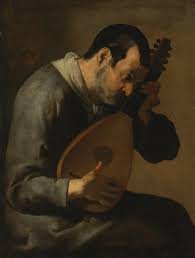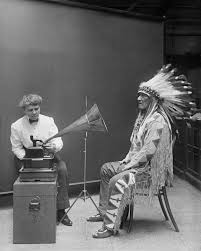Voice Echoes in Mimetic Hearing
How to hear? Not to listen, like saying "You need to pay attention," but instead how we create consistency in our voice as artists. How do we hear voice? How do we recognize what is uniquely our own? Is one obstacle. Then the next. How do we reproduce it again and again? It might seem easy on the surface. Once you do something, just do that same thing again. Then again. Then again. And on and on. But tell that to an artist. If you've ever shot a three pointer on the basketball court, you know it's muscle memory that allows the odds of hitting those threes over and over. When you're first starting to understand voice in your art you have moments when you hit nothing but net. Then you have moments when you air ball shot after shot, and you start to question, "How did I make those shots before?"As a creative writer, I've written stories with a certain voice and this voice was born out of my Kiowa community, which is interlaced with the Comanche community (many of my relatives are half Comanche). In my short story, Our Dance, the narrator is from Lawton, Oklahoma and he recounts when he received a per capita check from the Kiowa tribe. The story reflects my and other family member's experiences when we received money at the age of 18. The story wrote itself. The voice came so quickly and naturally it was an out of body experience to write it. Some spirit from within took me over and used me to write the story--was how it felt.Then I wrote other stories trying to capture similarly the Cherokee voices in my Cherokee community of Tahlequah, Oklahoma. My reason? I wanted to show people the beauty in our differences. How unique each tribe is. Often we Native Americans are lumped into the same group, and we do share a common experience and this history undoubtedly binds us together for many generations to come, and at the same time people from the outside often adhere to ubiquity and miss our essence as individual tribes. This is a great modality for a writer, but it spelled doom for my ability to capture a singularly unique voice as an artist.What was the consequence?I went into a tailspin for several years. Mimesis often locks me in circles that produce interesting pieces of literature, but it can also bind me into a cycle (or obsession) with topics that are distracting, like battling ubiquity.
It might seem easy on the surface. Once you do something, just do that same thing again. Then again. Then again. And on and on. But tell that to an artist. If you've ever shot a three pointer on the basketball court, you know it's muscle memory that allows the odds of hitting those threes over and over. When you're first starting to understand voice in your art you have moments when you hit nothing but net. Then you have moments when you air ball shot after shot, and you start to question, "How did I make those shots before?"As a creative writer, I've written stories with a certain voice and this voice was born out of my Kiowa community, which is interlaced with the Comanche community (many of my relatives are half Comanche). In my short story, Our Dance, the narrator is from Lawton, Oklahoma and he recounts when he received a per capita check from the Kiowa tribe. The story reflects my and other family member's experiences when we received money at the age of 18. The story wrote itself. The voice came so quickly and naturally it was an out of body experience to write it. Some spirit from within took me over and used me to write the story--was how it felt.Then I wrote other stories trying to capture similarly the Cherokee voices in my Cherokee community of Tahlequah, Oklahoma. My reason? I wanted to show people the beauty in our differences. How unique each tribe is. Often we Native Americans are lumped into the same group, and we do share a common experience and this history undoubtedly binds us together for many generations to come, and at the same time people from the outside often adhere to ubiquity and miss our essence as individual tribes. This is a great modality for a writer, but it spelled doom for my ability to capture a singularly unique voice as an artist.What was the consequence?I went into a tailspin for several years. Mimesis often locks me in circles that produce interesting pieces of literature, but it can also bind me into a cycle (or obsession) with topics that are distracting, like battling ubiquity. Ultimately, I learned I can address this issue of homogeneity in other ways. I've come full circle recently and am starting to look toward the voice that came out of my Kiowa community as the voice I'm going to use in my literature. I'm revising my first novel and yesterday I came to chapter 13 and somehow my Kiowa "voice" started to manifest. I suddenly could "hear" the tone and pitch of my community laced in the words. The voice is a little different than when I wrote Our Dance, but I'm excited to see how it has grown. My advice for other writers: hear your community, hear your family, pause and hear. Don't listen, because you'll only focus on the words. Hear the vowels rise or drop. Hear the absence of consonants. Hear the subtle pauses.Then when you hear the voice you're going to use in your art: capture it quickly. Produce something you can return to time and again. Every time you reread that story, you look at that painting, or you sing that song take it and transfer it into the next project and then the next. Always go back to the original voice in the same way you always go back home. Even if it's just to remember where you came from.
Ultimately, I learned I can address this issue of homogeneity in other ways. I've come full circle recently and am starting to look toward the voice that came out of my Kiowa community as the voice I'm going to use in my literature. I'm revising my first novel and yesterday I came to chapter 13 and somehow my Kiowa "voice" started to manifest. I suddenly could "hear" the tone and pitch of my community laced in the words. The voice is a little different than when I wrote Our Dance, but I'm excited to see how it has grown. My advice for other writers: hear your community, hear your family, pause and hear. Don't listen, because you'll only focus on the words. Hear the vowels rise or drop. Hear the absence of consonants. Hear the subtle pauses.Then when you hear the voice you're going to use in your art: capture it quickly. Produce something you can return to time and again. Every time you reread that story, you look at that painting, or you sing that song take it and transfer it into the next project and then the next. Always go back to the original voice in the same way you always go back home. Even if it's just to remember where you came from.
Support a Native owned Etsy shop, Allies United, where I offer unique merch for allies of social justice movements, like MMIW, Native Lives Matter and Black Lives Matter. Take a look inside my Etsy shop here: etsy.com/shop/AlliesUnited.
(Cited: Images were borrowed from Wikipedia and Wikimedia Common).